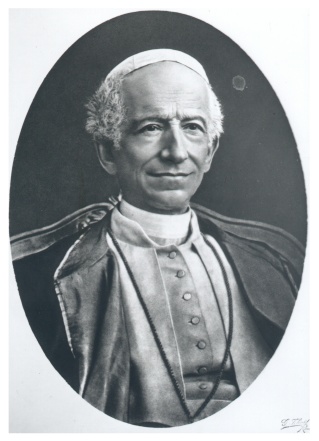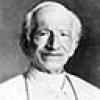 In order to cast contempt and hatred upon the Mystical Bride of Christ, who is the true Light, the children of darkness are wont to slander her before the initiated, calling her the friend of obscurantism, the promoter of ignorance, the enemy of science and progress; in so doing they invert the essence and meaning of names and things.
In order to cast contempt and hatred upon the Mystical Bride of Christ, who is the true Light, the children of darkness are wont to slander her before the initiated, calling her the friend of obscurantism, the promoter of ignorance, the enemy of science and progress; in so doing they invert the essence and meaning of names and things.
But what the Church has done and what she has taught people since her origins is enough to reject and refute the impertinence of such an abominable lie. For, in addition to the knowledge of divine things, in which she is the only teacher, the Church, through her doctors, has cultivated and illustrated that essential exercise of philosophizing which is directed to the scientific foundation of knowledge and to clarify its principles. Her doctors have provided criteria for rigorous research and systematic exposition of results, exploring the faculties of the soul, studying human life and customs —and all that to such an extent that it is not easy to add anything worthy of mention to this subject, and it is dangerous to depart from it.
Moreover, the Church deserves great credit for completing and perfecting the law, nor can it ever be forgotten how much she has contributed by her teaching, example, and institutions, to the solution of the complex problems of the so-called economic and social sciences.
At the same time, the Church did not neglect the study of nature and its laws, and established schools and museums for the better study of the scientific youth. Among her children and ministers were distinguished scientists, whom she helped and honored when she could, urging them to devote themselves earnestly to such studies.
Among all these sciences, astronomy occupies a pre-eminent place: it aims at the study of those inanimate creatures which, more than others, proclaim the glory of God, and which gave admirable pleasure to the wisest of men, who rejoiced in the knowledge divinely inspired to them, especially of “the cycle of the year and the positions of the stars” (Wis 7:19).
What prompted the pastors of the Church to promote the progress of this science and to favor its adherents was, moreover, the possibility, which it alone offered, of determining with certainty the day on which the principal religious solemnities of the Christian mystery were to be celebrated. And so the Tridentine Fathers, well aware that Julius Caesar's reform of the calendar had not been perfect and that the calculation of time had therefore been altered, immediately prayed to the Roman Pontiff to prepare, after consulting experts in the matter, a new, more perfect reform of the calendar.
It is well known and historically documented with how much zeal, commitment and generosity Our Predecessor Gregory XIII responded to this request. He ordered an observatory tower to be built in the most suitable place among the Vatican buildings, equipped with the best instruments of the time, and where he held the meetings of the experts he had appointed to reform the calendar. Such a tower still exists today and bears the illustrious memory of its generous author; inside it is the sundial built by Ignazio Danti Perugino, with a round marble table inserted, whose skillfully drawn lines, when touched by the rays of the sun descending from above, show how necessary it was to correct the old calendar and how much the reform made is in harmony with nature.
This tower, an outstanding monument of a Pontiff who did so much for the progress of letters and sciences, was restored to its original purpose as an astronomical observatory at the end of the last century, after a long period of inactivity, on the orders and under the patronage of Pius VI, and, on the initiative of Filippo Gilii, a Roman monsignor, it was also used for research in terrestrial magnetism, meteorology and botany. However, after the death of this able scientist in 1821, this temple of astronomical science was abandoned and neglected: soon after followed the death of Pius VII, and the concerns of Leo XII were entirely absorbed by the reform of studies throughout the Church, a great undertaking to promote every branch of knowledge. This reform, already planned by his immortal immediate predecessor, was happily carried out by him with the Apostolic Letter Quod divina sapientia. In this letter he laid down certain rules concerning astronomical observatories, observations to be made regularly, daily records to be kept, and information to be communicated at home about discoveries made abroad. If the Vatican Tower [or Tower of the Winds] was put aside, as an observatory, after others in Rome had been equipped for the same purpose, it was because those most competent in the matter considered that the neighboring buildings, and especially the dome that crowns the Vatican Temple, represented an obstacle for the observations. So it seemed to be preferable to have “specolas,” which from other elevated places allow an unobstructed observation of the sky.
Well then, after these places, together with the whole city of Rome, had fallen under the power of others [namely the Roman College Observatory, ndt], on the occasion of our fifty-first year of priesthood, together with other gifts, we were offered many and excellent instruments for the study of astronomy, meteorology, and terrestrial physics; and the experts in the matter thought that no place was more suitable to receive them than that which Gregory XIII seemed to have somehow prepared in the Vatican Tower. After examining this proposal, the structure of the building itself, the memories of its former glory and the equipment already collected there, as well as the petitions of persons eminent in science and prudence, convinced us to order that this Specola be restored and equipped with everything necessary for research not only in astronomy, but also in terrestrial physics and meteorology. The fact that it lacked the breadth of view necessary for the observation of the heavenly bodies in every direction of the sky, was conveniently compensated by the proximity of the ancient, solid Leonine fortress, whose tower, rising high on the top of the Vatican hill, permits a complete and perfect observation of the stars in every respect. We therefore added this tower to the Gregorian Specola by installing the large equatorial instrument intended for photographing the stars.
For this purpose we have chosen industrious men who will render all the services required for such an undertaking, and to them we have appointed a most competent scholar of astronomy and physics, Father Francesco Denza of the Clerics Regular of St. Paul, also called Barnabites. Relying on their diligence, we gladly accept that the “Specola Vaticana” be called upon to collaborate with other distinguished astronomical institutes in the undertaking of the accurate reproduction on photographic plates of the map of the entire starry sky.
Since we do not want the work of restoring this Specola to be exhausted in a short time, but rather to be of a lasting nature, we have given it a Statute with rules to be followed in its internal management and in the services to be requested. We have also appointed a Council of the most select persons, to whom we have given the responsibility of government and the highest authority after our own, for all decisions affecting the internal order.
Well, then, by this letter we confirm this Statute and this Council, no less than the assignment of the various offices and all that has been done by our order or consent concerning the Specola Vaticana; and we wish it to be considered on the same level as the other Pontifical Institutes founded for the promotion of the sciences. Indeed, in order to ensure the stability of this work, we allocate to it a sum of money, the income of which will be sufficient to cover the expenses necessary for its preservation and maintenance. We trust, however, that this work will be defended and promoted more by the favor and help of Almighty God than by human intervention; for in undertaking this work we have not only sought to promote a most noble science, which, more than any other human discipline, elevates the minds of mortals to the contemplation of heavenly things, but we have primarily proposed what we have constantly endeavored to do, by word, writing, and deed, whenever opportunity has presented itself, since the beginning of our pontificate: That is, to make it clear to all that the Church and her Pastors are not opposed to true and sound science, whether human or divine, but that they embrace it, encourage it, and promote it with every possible effort.
All that we have established and declared in this letter, therefore, we wish to be confirmed and ratified in the future as it is, just as we declare null and void any changes that may be attempted by anyone in the future. And it remains established and confirmed, notwithstanding any previous provision to the contrary.
Given at Rome, at St. Peter's, on March 14, 1891, the fourteenth of Our Pontificate.
S. Maffeo, La Specola Vaticana. Nove Papi, una missione, Pubblicazioni della Specola Vaticana, Città del Vaticano 2001, pp. 297-301. The English text is our translation from the published Italian text.
